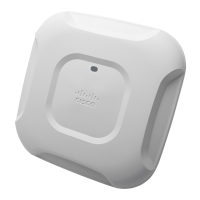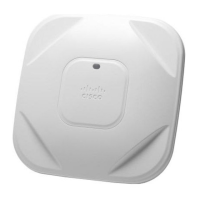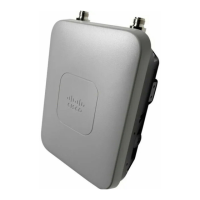Do you have a question about the Cisco 1830 Series and is the answer not in the manual?
| Model | Cisco 1830 Series |
|---|---|
| Wi-Fi Standards | 802.11a/b/g/n/ac Wave 2 |
| Security | WPA, WPA2, WPA3, 802.1X, AES, TKIP |
| Frequency Bands | 2.4 GHz, 5 GHz |
| Antenna Type | Internal |
| Power Options | 802.3af PoE |
| Form Factor | Ceiling mount, wall mount |
| Mounting | Ceiling or wall |
| Operating Temperature | 0°C to 40°C |
| Weight | 0.7 kg |
| Ethernet Ports | 1 x Gigabit Ethernet |
Introduces the guide's purpose, scope, and mounting/troubleshooting instructions.
Lists model numbers and their relation to regulatory domains.
Details supported modes, radio features, and external interfaces of the AP.
Provides critical safety warnings about electrical hazards and proper handling.
Highlights specific precautions for mounting and indoor use.
Details the procedure for unpacking the AP and verifying contents.
Shows the location of the LED indicator on the access point.
Illustrates and labels the various ports and connectors on the AP.
Recommends site surveys and lists required network information.
Describes mounting options and power supply methods for the AP.
Lists the sequential steps for installation, from configuration to deployment.
Illustrates the network setup required for pre-installation configuration.
Outlines the detailed steps for pre-installation configuration.
Describes mounting configurations and lists associated mounting hardware.
Explains powering options like 48V DC and Power-over-Ethernet (PoE).
Illustrates the correct routing of the DC power cable for safety.
Explains how the AP discovers and connects to the wireless LAN controller.
Details the steps for deploying the AP onto the wireless network.
Shows the location of the status LED and provides a brief overview.
Provides a detailed table of LED states and their meanings.
Explains the status indications for the Ethernet port LEDs.
Describes the functions and usage of the mode button for reset and clearing storage.
Ensures controller software is current and checks for RADIUS, certificates, and domain mismatches.
Addresses issues with CAPWAP discovery requests, join requests, and state maintenance.
Explains using DHCP Option 43 to provide controller IPs via TLV format.
Details steps for configuring DHCP pools and option 43 in Cisco IOS.
Provides FCC compliance statements and operating conditions for the device.
Includes the VCCI statement for Japan regarding Class B digital devices.
Information on obtaining documentation, using the Bug Search Tool, and submitting service requests.











